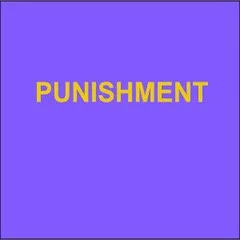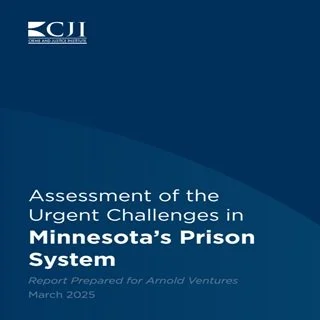By The Center for Crime and Justice Institute
To understand the scope and the urgency of these challenges in Minnesota, state leaders sought assistance from the Crime and Justice Institute (CJI), funded by Arnold Ventures, to examine aspects of the state’s criminal justice system. This assessment included an examination of past and current prison population trends, prison conditions in the oldest prison facilities, and the costs associated with potential solutions. CJI analyzed publicly available data, performed statutory analysis, and interviewed criminal justice practitioners and stakeholders, including system-impacted individuals, attorneys, legislators, and staff at advocacy organizations.
The United States built its first prison in 1773 in an old copper mine. 1 The nation’s criminal justice system has grown and evolved, yet many facilities that the system continues to rely on were built in the 19th and early 20th centuries. Minnesota is an example of this, with over 2,000 individuals housed in two facilities built more than 100 years ago. 2 Continued use of these facilities is problematic as their structures prohibit the programming necessary for effective rehabilitation, and the conditions within their walls create dangerous safety and health hazards for staff and those incarcerated. 3 Since 1990, Minnesota’s prison population rose steadily until it peaked at over 10,000 people in 2016. The prison population declined during the COVID-19 pandemic, as it did nationally. However, post-pandemic, the population climbed, from 7,300 incarcerated people in 2021 to 8,277 in January 2025. 4,5 As of January 2025, the 109-year-old prison in Stillwater houses more than 1,100 people, and the 135-year-old prison in St. Cloud houses nearly 950 people.6,7 The dangerous conditions within these two facilities present an urgent need to act. Since 2023, there have been major disruptions in operations at both facilities. Individuals in custody refuse to return to their cells, and violent incidents that necessitate lockdowns further create stress and frustration inside the prison gates.8,9,10 This assessment found: • While Minnesota’s prison population and incarceration rate are below the national average, they are rising at a faster pace than the national rate. 11 • Stillwater and St. Cloud house a significant number of incarcerated individuals whom other facilities would have to accommodate if either facility had to shut down. 12 • The conditions at these facilities limit opportunities for programming, education, vocational training, and, thus, the ability for incarcerated individuals to earn credit to receive time off their sentences and to prepare to integrate successfully into their communities. 13,14 • While the recent passage of the Minnesota Rehabilitation and Reinvestment Act (MRRA) and other similar pieces of legislation are expected to reduce the amount of time incarcerated individuals serve in the state and, ultimately, the size of the overall prison system,15 these impacts will not be immediate. As the state waits to see these legislative efforts bear fruit, immediate steps are necessary to improve public safety, reduce recidivism, and improve the safety of the people who live and work in the prison system. This examination, which includes ways other states addressed similar challenges, will enable state leaders to make informed decisions about potential next steps to achieve these goals.
Boston: The Crime and Justice Institute (CJI)2025. 20p.







